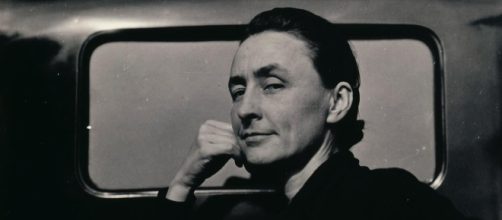The Museum of Modern Art may be on to something by titling Georgia O’Keeffe current show in her own words – “To See Takes Time.” In this way, you get the artist’s thinking rather than some curatorial thesis.
What a concept
In this way, you don’t have the art world getting an artist wrong. When O’Keeffe wrote the words “to see takes time,” she was talking about painting flowers, something the cognoscenti see as female genitals.
Even O’Keeffe’s artist-husband Alfred Steiglitz got her flowers wrong. On first sight he warned her not to show them. As her biographer Jeffrey Hogrefe tells it, she cried inconsolably over that remark, insisting to her death that aesthetics was her aim, not anatomy.
As O’Keeffe told biographer Roxana Robinson, “There was a flower. It was perfectly beautiful, but it was so small, you really couldn’t appreciate it. So, I thought to make it like a huge building going up. Then you couldn’t ignore its beauty.”
And the thing is, she’s painted what she saw. It’s not some perversion on her part that turns her flowers into female anatomy – and sometimes male anatomy, too. Why didn’t Steiglitz and all the other naysayers fret that her “The Blue Flower” looks like testicles?
At least, the poet Marianne Moore saw past the likeness of flowers to human anatomy. She saw O’Keeffe’s blow-ups of petals as the mountain ranges of the American Southwest.
All you do is copy
But the art world kept on seeing O’Keeffe’s flowers as female sex organs.
“All she does is paint vaginas,” said Andy Warhol. To that I say, at least she was original. A case brought against this Campbell Soup kid accuses him of basing his work on a copyrighted photograph.
O’Keeffe didn’t copy anybody. She said it herself: "Before I put a brush to canvas, I question, 'Is this mine? Is it influenced by some idea which I have acquired from some man?' I am trying with all my skill to do a painting that is all of me.''
Still the hits kept coming. Art Digest called her flower paintings “primordially libidinous.” She became so angry over such views that she stopped painting for a time.
But nothing stopped one art luminary after another from seeing her giant flowers as giant vulvas.
New York Times art critic Michael Kimmelman was certain of it, declaring, “The seductive bands and furrows in O’Keeffe’s work deserve obvious sexual interpretation.”
In disgust, O’Keeffe told New York art critic Emily Genauer, “I hate flowers. I paint them because they’re cheaper than models and they don’t move.”
Of course, she didn’t hate flowers; it was their color and shape that mattered to her, not their resemblance to human anatomy. Cursory views of her work as “libidinous” need longer looks. Or as she put it, “To see takes time.”


